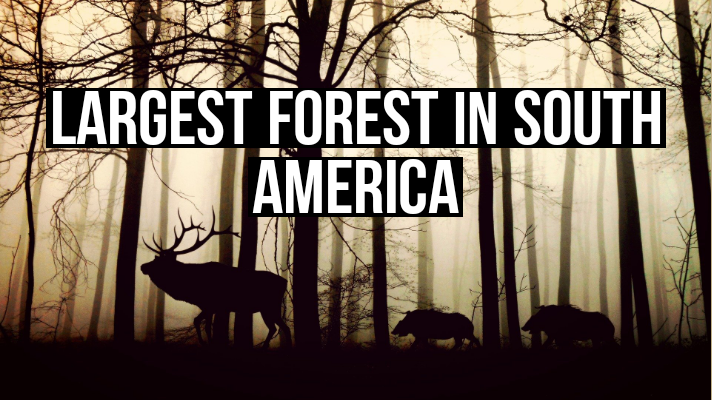forest in south America
Forests cover about 30 percent of Earth’s total land area. They are home to many species of plants and animals and form a complex ecosystem.Forests are large areas that are densely covered with trees. They are found all over
the world and provide human beings with a lot of natural resources.
The Monteverde Cloud Forest
Costa Rica’s Monteverde Cloud Forest, encompassing 40 square miles (105 square km), is nonetheless one of the most biodiverse habitats on Earth.
Characterized by foglike clouds and humidity levels of close to 100 percent throughout the year, cloud forests make up just 1 percent of the world’s woodlands.
A safe haven The highly protected Monteverde Cloud Forest Reserve is located around 4,720 ft (1,440m) above sea level in the Cordillera de Tilarán, part of a larger mountain chain running along the center of Costa Rica.
- The result is an astonishingly rich habitat containing more than 3,000 species of plants, as well as thousands of insect, 400 bird, and around 100 mammal species.
The Monteverde Cloud Forest One of the world’s most biodiverse and protected habitats, where sea, moisture, and mountains create a rain forest constantly shrouded in clouds Rainfall is extensive, with an average of 102 in (2,590mm), while temperatures range between 57°F and 73°F (14°C and 23°C). Almost constant cloud covers the eastern forest, formed by warm Atlantic air ascending the mountains.
The Amazon
- The Amazon Rainforest Earth’s largest tropical rain forest, home to 390 billion trees and 2.5 million insect species More than half of the world’s species live in tropical rain forests.
Covering an area of almost 2 million square miles (6 million square km), the Amazon is the world’s largest tropical rain forest, situated within the planet’s biggest river drainage basin.
The bulk of the rain forest is located in northern Brazil, but parts extend into eight other South American countries. Rainfall is high—as much as 120 in (3,000mm) per year—with humidity averaging over 80 percent, and temperatures rarely falling below 79˚F (26˚C). This constantly moist, warm environment hosts an incredibly rich ecosystem, where an estimated 16,000 tree species coexist alongside 1,300 bird species and a staggering 2.5 million insect species.
Scientists believe even more species have yet to be discovered. However, deforestation, due mainly to cattle ranching and agriculture, remains a huge threat to the Amazon Rain forest. From 1970 to 2016, 296,887 square miles (768,935 square km), or roughly 20 percent, of the Brazilian rain forest was destroyed. Tropical rain forests grow in five main layers.
The forest floor is the hottest, darkest, and most humid. Small shrub-layer plants come next, competing for light and food. In the understory, ferns and vines grow over taller trees, where most birds nest. Eighty percent of rain forest life lives in the hot, dry canopy at heights of around 100 ft (30 m).
Only the tops of the tallest trees, the emergents, project above it. Fallen tree If an old tree falls over, it creates a gap in the canopy, allowing in sunlight. Nearby trees undergo a growth surge.
Also Read : How to earn money at home for students
The Yungas covers
The Yungas covers the eastern slopes of the Andes from northern Argentina through Bolivia and into Peru. At an altitude of 3,300–11,500ft (1,000–3,500m), it forms a transitional area between the Andean highlands and the eastern lowlands.
In this area are many temperature-sensitive climatic zones, ranging from high, subtropical cloud forests to moist temperate woodlands. Because many animal species are confined to “shoestring distributions”—areas that extend for several miles horizontally but only a few hundred feet vertically—the biodiversity of the Yungas is very high.
The Valdivian Temperate Forest
South America’s only temperate rain forest is also one of the largest in the world, second only to the coastal temperate rain forest of the Pacific Northwest.
Having evolved separately from plants in the Northern Hemisphere, many species are unique to the region, including the rare Patagonian cypress (a giant conifer) and the prehistoric monkey puzzle tree.
Bordered to the west by the Pacific Ocean and to the east by the Andes, the Valdivian runs mainly along the Chilean coast, with parts stretching into Argentina.









1 thought on “Largest forest in south America”
Comments are closed.